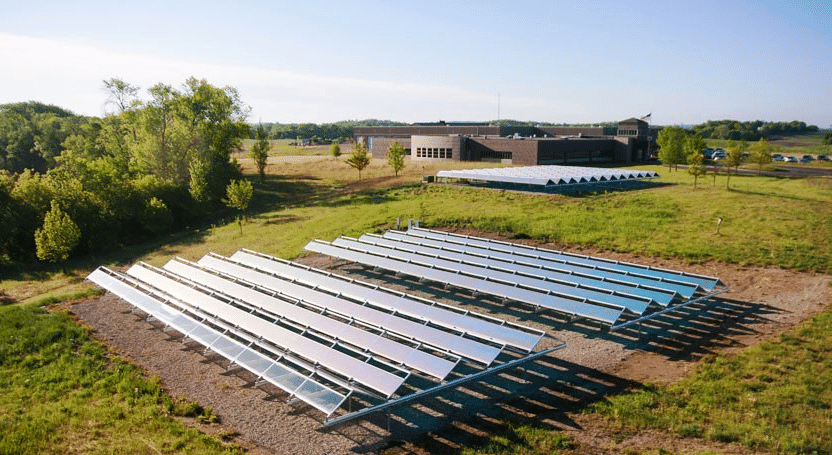Less than a decade ago, solar power was a relative novelty among America’s rural electric cooperatives. Despite the promise of locally generated clean power serving more sparsely populated territories, high costs and a lack of infrastructure discouraged serious investment. But only a few years later, PV is becoming a major energy source in rural cooperatives, according to a recent report by the National Rural Electric Cooperative Association (NRECA).
A Solar Revolution in Rural America, describes how the U.S. rural co-op PV market has grown by an order of magnitude in seven years, aided greatly by a partnership of the U.S. Department of Energy and the NRECA called the “Solar Utility Network Deployment Acceleration,” or SUNDA. SUNDA was launched in 2013 with 17 rural coops in 10 states that resulted in 30 MW of projects. The initiative helped sparked a growth of PV in rural coops from 35 MW of installed capacity in 2010 to 868 MW in 2017, with the promise of cracking the gigawatt threshold in 2018 or 2019.
The report finds that about half of the 900 rural electric cooperatives in the United States are actively engaged in or planning to build PV capacity, either through on-site or in-service territory installations, or by outside procurements such as power purchase agreements. Rural co-ops with in-service territory generation and transmission capacity have taken a lead role, with over 370 MW of projects developed.
Besides cost sharing in projects, the SUNDA program has helped launch new PV market segments in rural co-ops, such as community solar for low and moderate income households, partnerships with military installations for energy security and independence, plus combined solar and energy storage projects, including controllable water heaters. SUNDA also provided an array of toolkits designed for the rural electric coop market, including tools for project cost and financing screening, project management, staff communicators and field manuals.
And while overall deployment boomed, PV project sizes at rural cooperatives exploded from an average of 25 kW in 2014 to over 1 MW in 2017. Installation costs plummeted in the same time period from $4.50/watt to less than $1.50. These cost reductions have been especially important in keeping with the rural electric cooperative mission of affordable electricity to a market where the large majority of members have household incomes below the national average.
The rural cooperative PV market has gone from being a rounding error in these utilities’ renewable energy portfolio, largely dominated by hydro, wind and biomass power in 2013, to a 5% share in 2017. While rural electric cooperatives can ally with tax equity partners to take advantage of incentives not normally available to nonprofit entities, there are other financing resources where they can participate, such as Rural Utilities Service loans and National Rural Utility Cooperative Finance loans or leasing.
This content is protected by copyright and may not be reused. If you want to cooperate with us and would like to reuse some of our content, please contact: editors@pv-magazine.com.








By submitting this form you agree to pv magazine using your data for the purposes of publishing your comment.
Your personal data will only be disclosed or otherwise transmitted to third parties for the purposes of spam filtering or if this is necessary for technical maintenance of the website. Any other transfer to third parties will not take place unless this is justified on the basis of applicable data protection regulations or if pv magazine is legally obliged to do so.
You may revoke this consent at any time with effect for the future, in which case your personal data will be deleted immediately. Otherwise, your data will be deleted if pv magazine has processed your request or the purpose of data storage is fulfilled.
Further information on data privacy can be found in our Data Protection Policy.